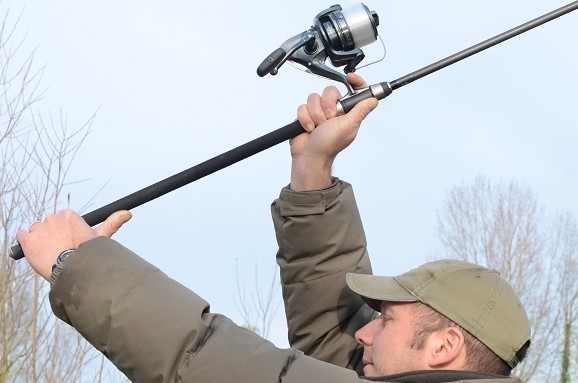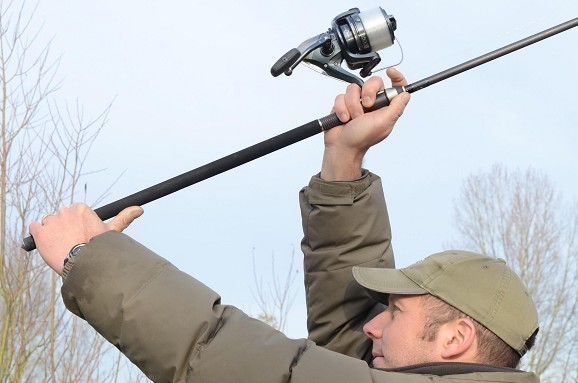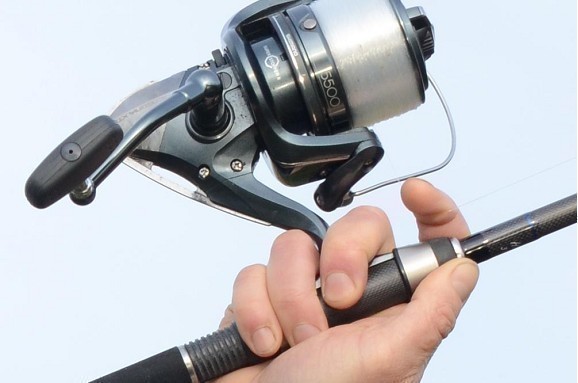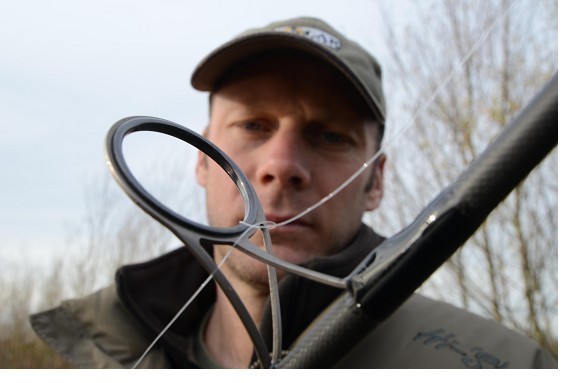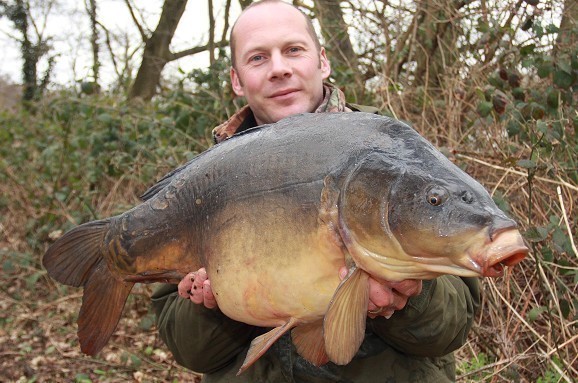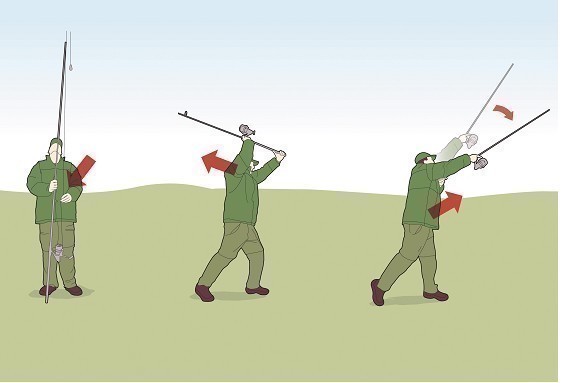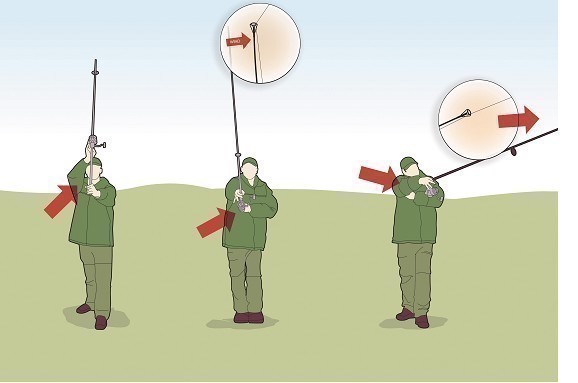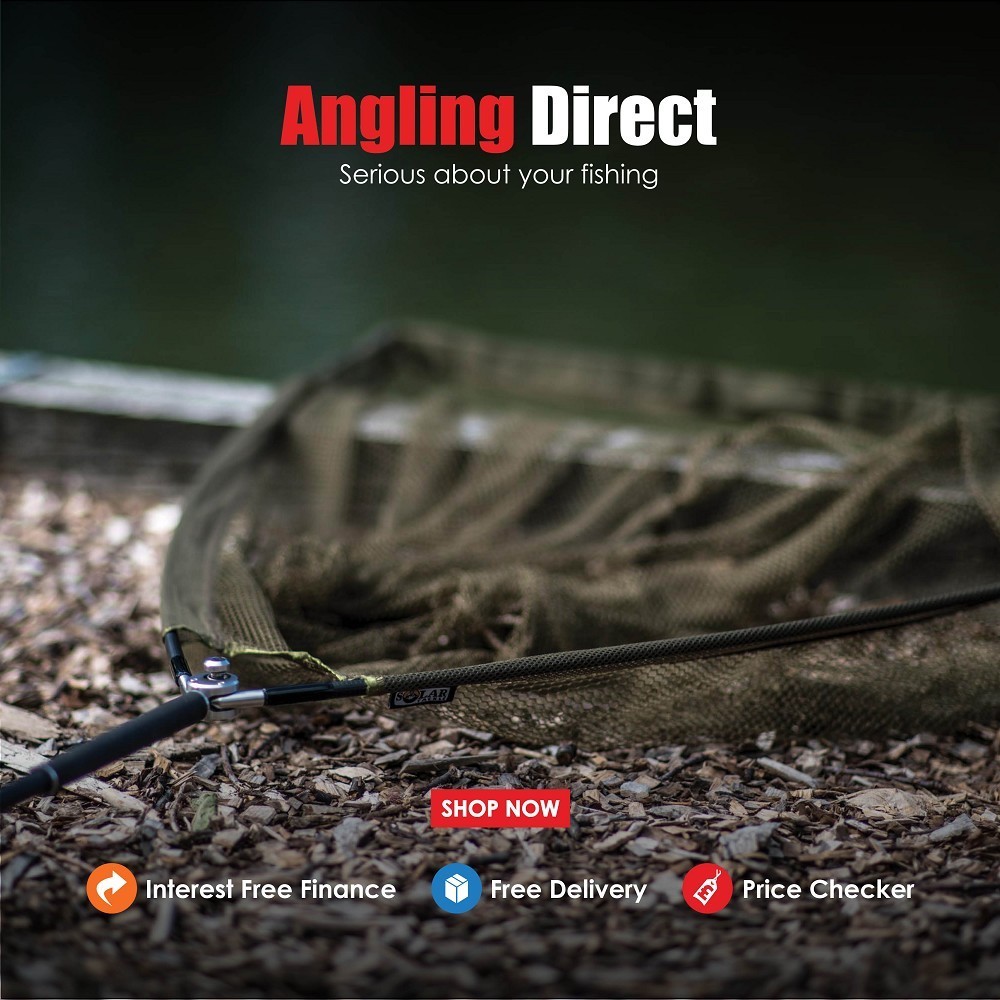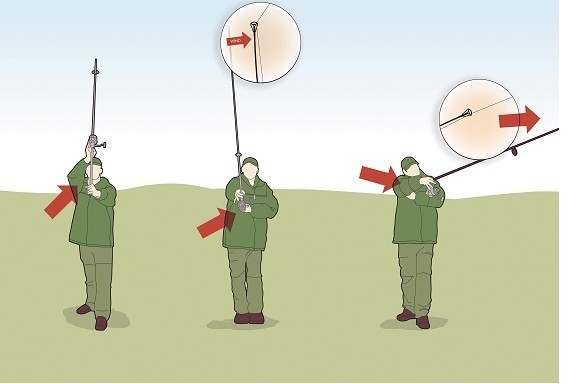
6 casting tricks you need to know
As part of our never-ending quest to make you better casters, Carp-School tutor Myles Gascoyne is here to help
The Fault
A very common problem when casting is known as a frap-up, or better known as a butt-wrap. This is where the line is caught around the butt ring on the cast and thus results in a crack-off – i.e. the line parting. This is not only dangerous to other anglers but also to the fish and wildlife as more baited rigs in the water is never good news for fish.
The Fix
The cause of this is often down to holding the reel incorrectly. If the reel is held with one finger in front of the reel seat, the angle of the line being held down by the fore-finger leading up to the cast is too acute. This means when it is released it turns and makes a large loop which catches on the butt ring causing the line to part
The Drill
Always have two fingers in front of the reel seat, this gives you greater support during the cast and also means the angle created by the index finger is at 90° to the spool.
The Tip
Always ensure the line isn’t twisted like this, if it is twisted badly, it will need replacing. The thinner the line, the less likely it is to create a butt wrap.
The Verdict
Keep your line in good condition and cast correctly in order to prevent crack-offs and you could bag up whilst fishing at range.
Casting into a headwind
01/ SHORTEN THE DROP
When casting into a headwind, firstly shorten the drop (the amount of line between the tip eye and the rig). Make it so when the rod is in the upright position the lead sits level between the second and third eye of the rod.
02/ STEPPING FURTHER
As you cast, step further forward than you would normally, this shift in weight will put more power into your cast and help you achieve the desired low and hard punch that is needed for casting into a head wind.
03/ LETTING GO LATER
On a normal cast you want to release the line when the rod is at a 45-degree angle. When casting into a head wind, aim to release around 55-degrees. This will make the lead travel lower and harder and will reduce drag on the line so you’ll achieve greater distances.
Casting into a crosswind
01/ MAKE THE CAST
Make the cast exactly as you have been instructed when fishing into a headwind, as this should help by making sure that the cast has a low and hard projectile. The result of this means that the wind won’t catch the line as much as when it goes high into the air.
02/ CROSSWINDS BOWS
After the cast is made, normally you hold the rod pointing straight at the marker float and allow the line to peel off the spool. However, holding the rod straight in a crosswind will result in a bow of line as it leaves the tip eye at an angle. This creates friction and resistance and therefore slowing your rig down, decreasing the distance you achieve and making you less accurate.
03/ POINT THE ROD
By pointing the rod to the side (like this) just after the cast and pointing the tip in the direction the line is going in, the friction will be greatly reduced. This decreases the size of the bow in the line and will increase the distance achieved and accuracy.
The side cast
01/ CHECK IT’S CLEAR
First, place your feet where they are comfortable and you can carry out the whole cast without moving. Place the rod at 3 o’clock and keep the rod as still as possible and don’t swing the rig back and forth before casting.
02/ LOOK AT THE TARGET
Your feet, legs and body should stay in the same place. Look directly at your chosen target (9 o’clock) and don’t follow the rod around with your eyes. This will help your accuracy with a side cast no-end.
03/ FEATHER IT DOWN
As you make the cast, just move your arms around, ending up at 9 o’clock. Once you have cast, while looking at the target, simply feather the line to slow it down and eventually stop it over the intended area.





